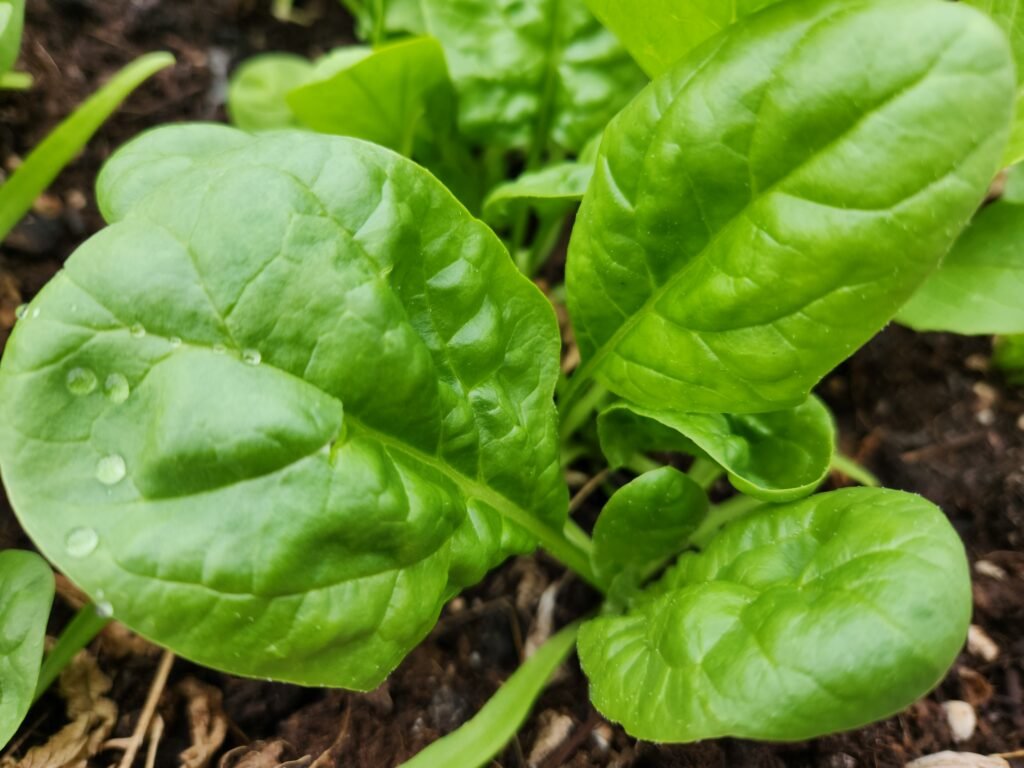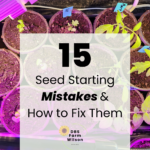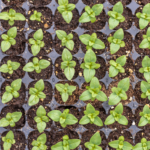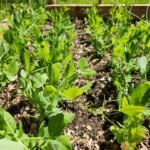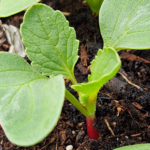Spinach is quickly becoming one of my favorite crops to grow in the garden. It thrives in cool weather, making it an ideal choice for both spring and fall planting. If you want to know how to grow spinach successfully, this guide will provide everything you need to achieve a bountiful harvest.
Choosing Your Spinach Variety
Most people recognize spinach as the 6-ounce container of baby spinach commonly found in grocery stores. However, there are several varieties to choose from, each with unique characteristics:
- Smooth Leaf Spinach: This spinach is the one we buy at the store. As the name suggests it has smooth leaves that are easy to wash. Harvest when the leaves are about an inch wide or slightly bigger.
- Savoy Spinach: This is the variety that I grow in my garden by the name Bloomsdale Spinach. It grow well in cold weather and it grows fast enough I can harvest it about every 5 days.
- Semi-Savoy Spinach: This variety grows more upright and has larger leaves. It is more disease resistant and does better in warm weather compared to the other varieties. I want to try this one soon!
- New Zealand Spinach: This variety doesn’t grow like the other varieties. It’s more of a vine that grows along the ground. We grew this last year. I really like how it tastes fresh but it can also be cooked. We grew this because it does well in the warm temperature and we were able to grow it all summer long.
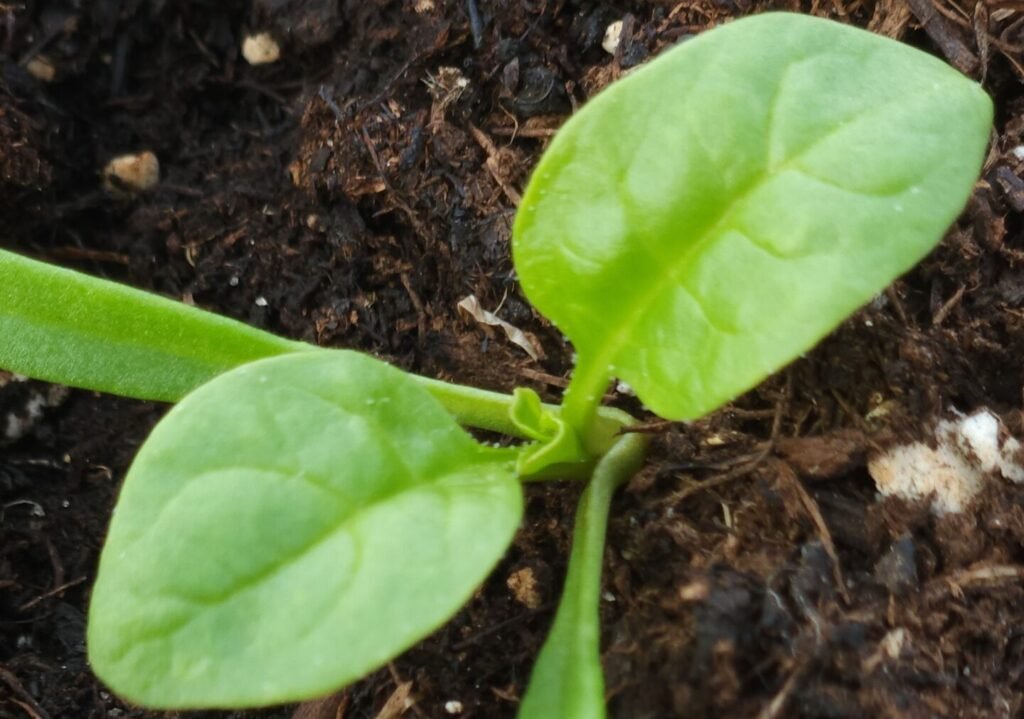
Starting Your Spinach Seeds
After selecting your spinach variety, it’s time to plant. Spinach prefers cool weather and partial shade, so choose a location that receives about 4-5 hours of sunlight daily while being protected from the intense afternoon sun.
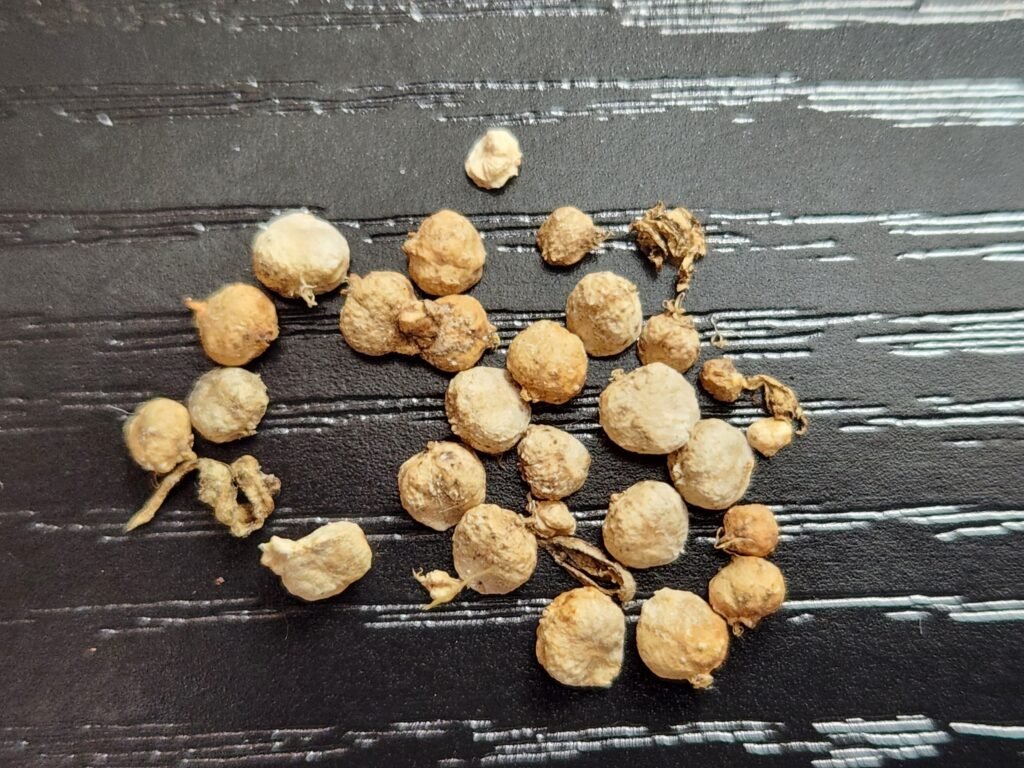
Direct Sowing
Unlike some crops, spinach does best when directly sown into the soil rather than transplanted. Plant your spinach seeds about 4-6 weeks before your area’s last frost date.
- Row Spacing: Recommended spacing between rows is 12-18 inches, but if you plan on harvesting frequently, you can space them as close as 6 inches apart.
- Prepare the Soil: Spinach grows best in fertile, well-draining soil with a pH between 6.0 and 7.0. Amend your soil with compost or aged manure to improve fertility and structure.
- Sow the Seeds: Plant seeds in shallow trenches, spacing them 2-3 inches apart and covering them with about a 1/2 inch of soil.
Caring for your Spinach:
Watering Spinach
Spinach requires consistent moisture to grow well. Keep the soil evenly moist but not waterlogged. Water deeply once or twice a week, depending on the weather conditions.
Protection From Pests
Spinach is susceptible to pests such as aphids, slugs, and leaf miners. Use row covers to protect your plants, and promptly remove any damaged leaves to prevent the spread of disease.
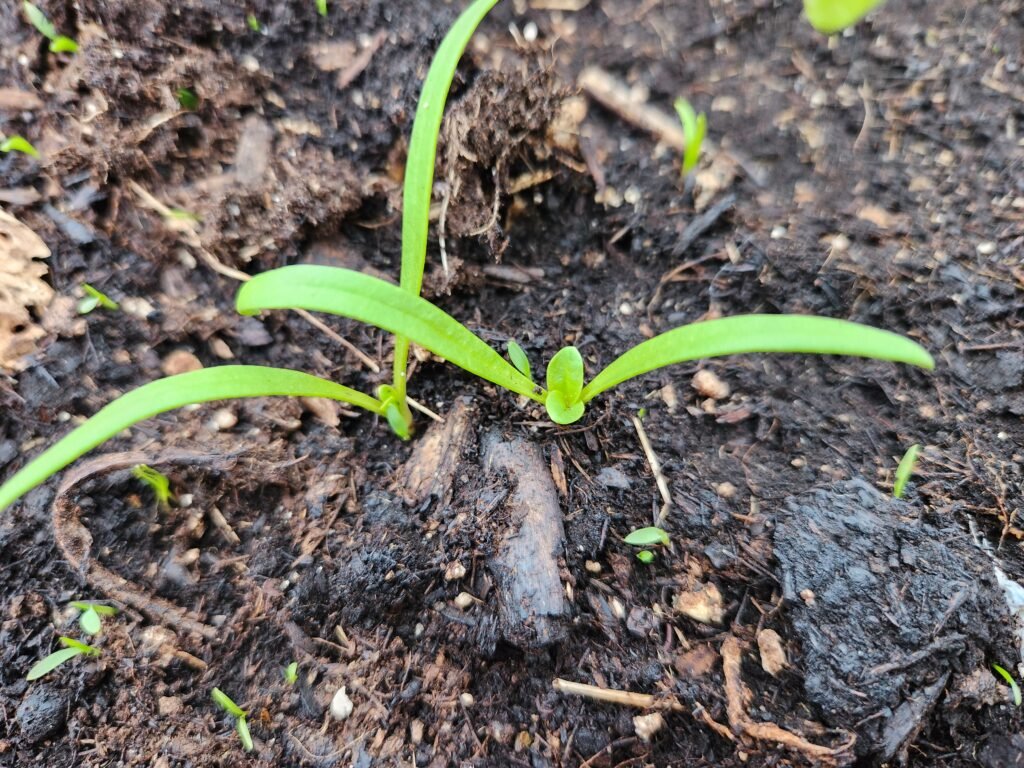
How To Fertilize Spinach
Spinach is a heavy feeder and benefits from regular fertilization. Apply a balanced fertilizer every 3-4 weeks to promote healthy growth and a productive harvest.
Thinning Spinach Seedlings
If you planted seeds close together, thin them once they sprout to avoid overcrowding. Aim for about 4 inches between each plant to ensure they have enough room to grow.
Mulching
Apply a layer of mulch around your spinach plants to retain moisture and suppress weeds. Straw, shredded leaves, or grass clippings work well. Check out our mulching guide to learn more about mulching.
How To Harvest Spinach:
Spinach is typically ready for harvest within 4-6 weeks of planting. Follow these tips for the best results:
- Pick the outer leaves first: This allows the inner leaves to continue growing, extending the harvest period.
- Harvest frequently: Regular harvesting encourages new growth and prevents the plant from bolting (going to seed prematurely).
- Cut at the base for a full harvest: If you prefer to harvest an entire plant at once, cut it at the base and allow new shoots to emerge.
Extending Your Spinach Growing Season
Successive Planting
To ensure a continuous supply of spinach, plant new seeds every two weeks. This method allows for staggered harvests throughout the season.
Fall Planting
Plant spinach in late summer or early fall for a second crop. In colder climates, cover plants with row covers or cold frames to extend the growing season.
Overwintering Spinach
In milder climates, spinach can be grown over winter. Protect plants with mulch or frost covers, and they will resume growth in early spring.
Common Problems When Growing Spinach
Bolting
Spinach bolts when exposed to high temperatures or long daylight hours. Prevent this by planting in early spring or late summer and selecting slow-bolting varieties.
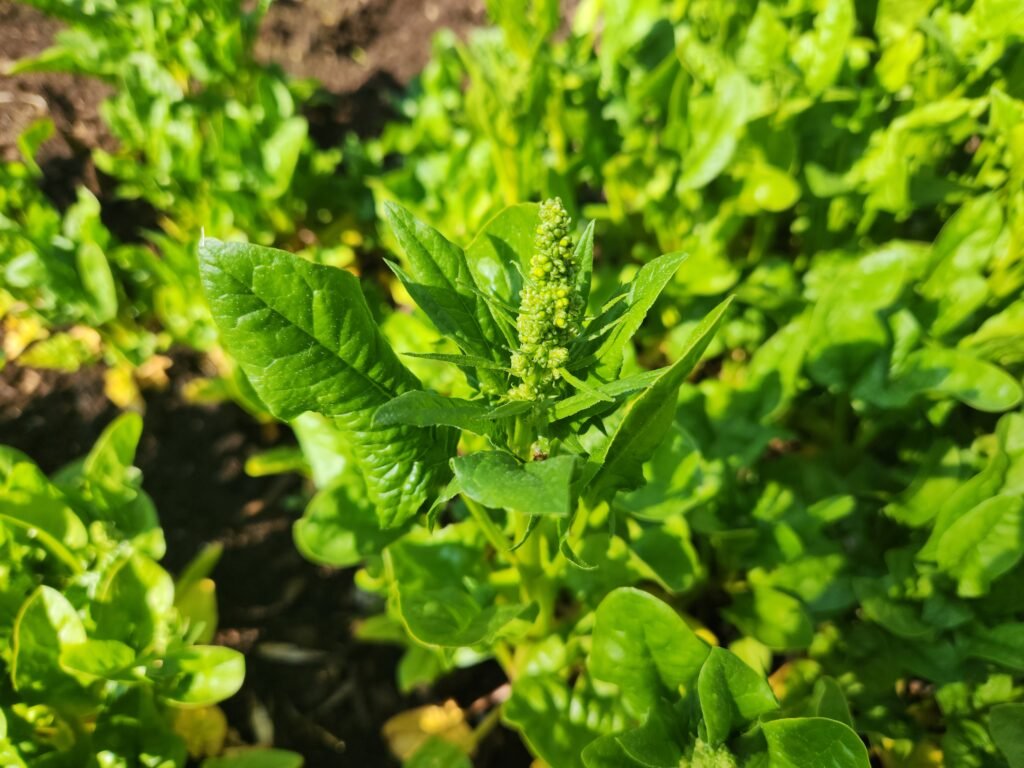
Yellowing Leaves
This may indicate a nitrogen deficiency. Apply a nitrogen-rich fertilizer like fish emulsion or compost tea to correct the issue.
Stunted Growth
Poor soil quality, lack of nutrients, or improper watering can result in stunted growth. Ensure your soil is fertile, well-drained, and consistently moist.
Frequently Asked Questions
A: Spinach typically takes 4-6 weeks from planting to harvest.
A: While spinach prefers cool temperatures, some varieties, like New Zealand spinach, tolerate warm weather.
A: Spinach becomes bitter if it bolts or experiences heat stress. Harvest early and keep plants cool to maintain sweetness.
A: No, spinach does not regrow from harvested leaves. However, if you cut the plant at the base, it may produce new shoots.
A: Use a balanced fertilizer or compost to ensure your spinach receives adequate nutrients.
A: Plant in cooler temperatures, provide shade during hot weather, and choose slow-bolting varieties.
Conclusion
By following these tips, you can successfully grow spinach and enjoy fresh, nutritious greens straight from your garden. If you find a variety you love, consider saving your own spinach seeds for next season. Check out our spinach seed-saving guide for more details.
We hope you enjoyed this growing guide. If you did make sure you check out the other growing guides, seed saving guides and our recipes. We are growing our website with more articles all the time, and we invite you to grow with us. Whether you’re a seasoned gardener or just starting out, growing spinach from seed can be an enriching experience. If you have any questions or want to share your spinach-growing journey, feel free to leave a comment below. Happy gardening!

